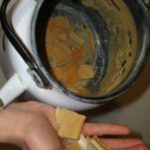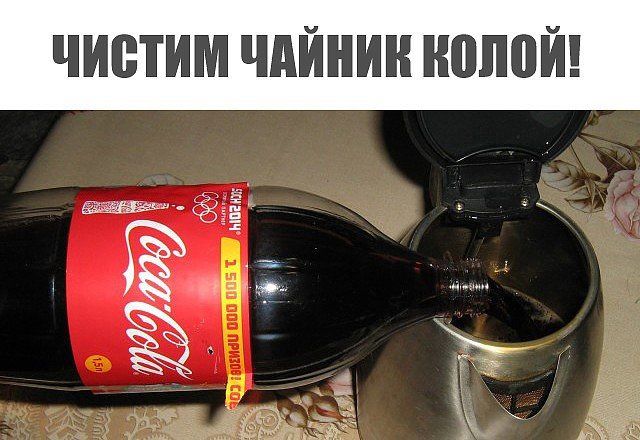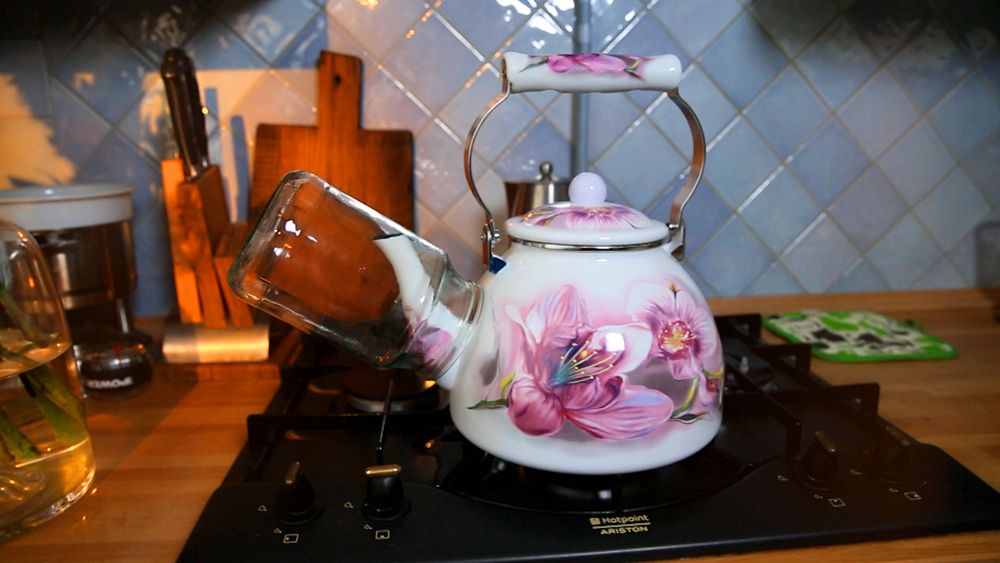How to descale a kettle with vinegar
In modern conditions, water quality often leaves much to be desired. If it contains a large amount of magnesium and calcium salts, this makes it hard. When boiling hard water, any kettle becomes covered with limescale.
Scale not only spoils the taste of the drink and the appearance of the kettle, but also increases its boiling time because it covers the heating element. This means that electricity or gas costs also increase.
The content of the article
Popular ways to descale a kettle with vinegar
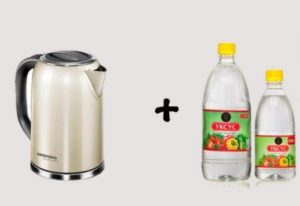 If you do not descale the kettle with vinegar, it may either burn out or rust. It’s better not to delay cleaning, it takes a little time, but you will get excellent results for little money.
If you do not descale the kettle with vinegar, it may either burn out or rust. It’s better not to delay cleaning, it takes a little time, but you will get excellent results for little money.
How to clean a kettle with vinegar? A kettle can be descaled using products that are readily available in every home. Let's look at the most popular ways to clean a kettle at home.
Vinegar and cold water
 Vinegar is the most accessible and common aid in descaling household appliances. You can use either vinegar or vinegar essence. What is the difference? Vinegar (table) is the most common solution of acetic acid, its concentration is 9%.
Vinegar is the most accessible and common aid in descaling household appliances. You can use either vinegar or vinegar essence. What is the difference? Vinegar (table) is the most common solution of acetic acid, its concentration is 9%.
Acetic essence is also an acid solution, but the concentration of the substance here is impressive - usually 70%. Acetic acid itself is rarely found on the farm: it is a powder or solution with a concentration of 90%. To clean, use the first or second option.
Important! Manufacturers of many electric kettles do not recommend using vinegar to remove scale due to its aggressiveness. In practice, it is often impossible to do without a potent agent. Try to follow these proportions when cleaning so as not to damage the equipment.
Pour 0.5 liters of water into the kettle. If you use 9% vinegar, then add about 150 ml (this is less than 1 glass), if vinegar essence, then one tablespoon will be enough. If your kettle has a large volume, then you can increase all components by 2. There are two options:
- First boil the water and only then pour in the vinegar;
- Add vinegar and then boil water.
The first option is more preferable, but you can test with experience which method suits you best. After boiling, leave the kettle to soak for 1-2 hours, periodically checking the condition of the scale. The plaque can completely peel off on its own or simply loosen on the walls.
Then take a soft sponge and carefully wash off the scale yourself. After the work has been done, rinse the tank several times, because vinegar has a rather pungent odor.
Vinegar and ascorbic acid
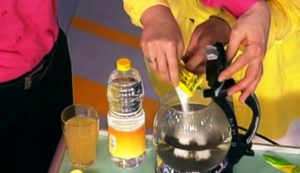 In this method, in addition to vinegar, use ascorbic acid powder. Pour purified water into the kettle, filling it about two-thirds full.Pour 2 tablespoons of ascorbic acid into the tank and pour in two tablespoons of table vinegar (if you only have vinegar essence, use it in a minimal amount - about 1 teaspoon).
In this method, in addition to vinegar, use ascorbic acid powder. Pour purified water into the kettle, filling it about two-thirds full.Pour 2 tablespoons of ascorbic acid into the tank and pour in two tablespoons of table vinegar (if you only have vinegar essence, use it in a minimal amount - about 1 teaspoon).
Boil the kettle and leave the solution for up to 10–12 hours. The scale usually goes away within the first couple of hours, so check the condition under the lid.
After treatment, rinse the kettle under running water and boil it 1-2 times to completely get rid of substances and unpleasant odors.
Boiling in three stages
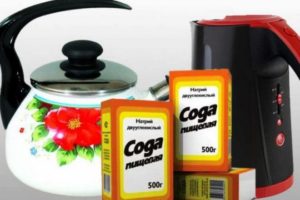 How to descale a kettle with vinegar? This method is suitable for situations where the plaque layer is very thick. Three-stage cleaning is the most aggressive for household appliances, so it should only be used in emergency situations.
How to descale a kettle with vinegar? This method is suitable for situations where the plaque layer is very thick. Three-stage cleaning is the most aggressive for household appliances, so it should only be used in emergency situations.
Let's look at how to descale a kettle with vinegar and soda:
- Fill the kettle with 1 liter of liquid, add 1 tablespoon of baking soda. Boil the water. If the kettle is electric, boil the water several times an hour; if for a stove, do not stop boiling for an hour;
- It's easy to descale a kettle with vinegar and soda. Next, drain the water and refill with 1 liter of clean water, dissolve 1 tablespoon of citric acid powder. Repeat boiling for one hour. Rinse off the scale that has already dissolved;
- The last step is to use approximately 100 ml of 9% vinegar or less than 1 tablespoon of vinegar essence and 1 liter of filtered water. Do a final hour-long boil. Wash off any remaining scale with a sponge, rinse the kettle thoroughly or boil it with clean water.
Preventive actions
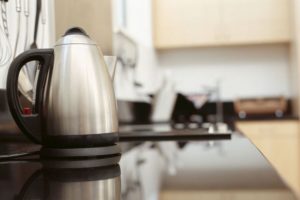 Cleaning a kettle from scale with vinegar is quite difficult in practice.However, you can follow a number of rules that will help you avoid cleaning for a long time or carry it out less often than usual:
Cleaning a kettle from scale with vinegar is quite difficult in practice.However, you can follow a number of rules that will help you avoid cleaning for a long time or carry it out less often than usual:
- Use clean, filtered water. You can use a filter in the form of a jug, a stationary filter, or buy bottled water. When buying bottled water, pay attention to the label: it usually indicates its hardness (for example, up to 1.5 is the hardest, more than 9 is very hard). Choose soft or least hard water;
- Never boil the same water twice or more, it is better to replace it with new one;
- Each time, rinse the kettle to remove white “flakes” that form during boiling;
- When flushing the tank, use gentle methods. Do not wash the kettle with hard metal sponges or abrasives. They can damage the walls, as a result of which plaque quickly eats into scratches and microcracks, and the processes of rusting and destruction of enamel or plastic begin;
- With proper care, you can regularly use gentle cleaning methods, such as brine or fruit peeling, for prevention.
Now you know how to descale a kettle with vinegar. There is nothing complicated in the procedure.



